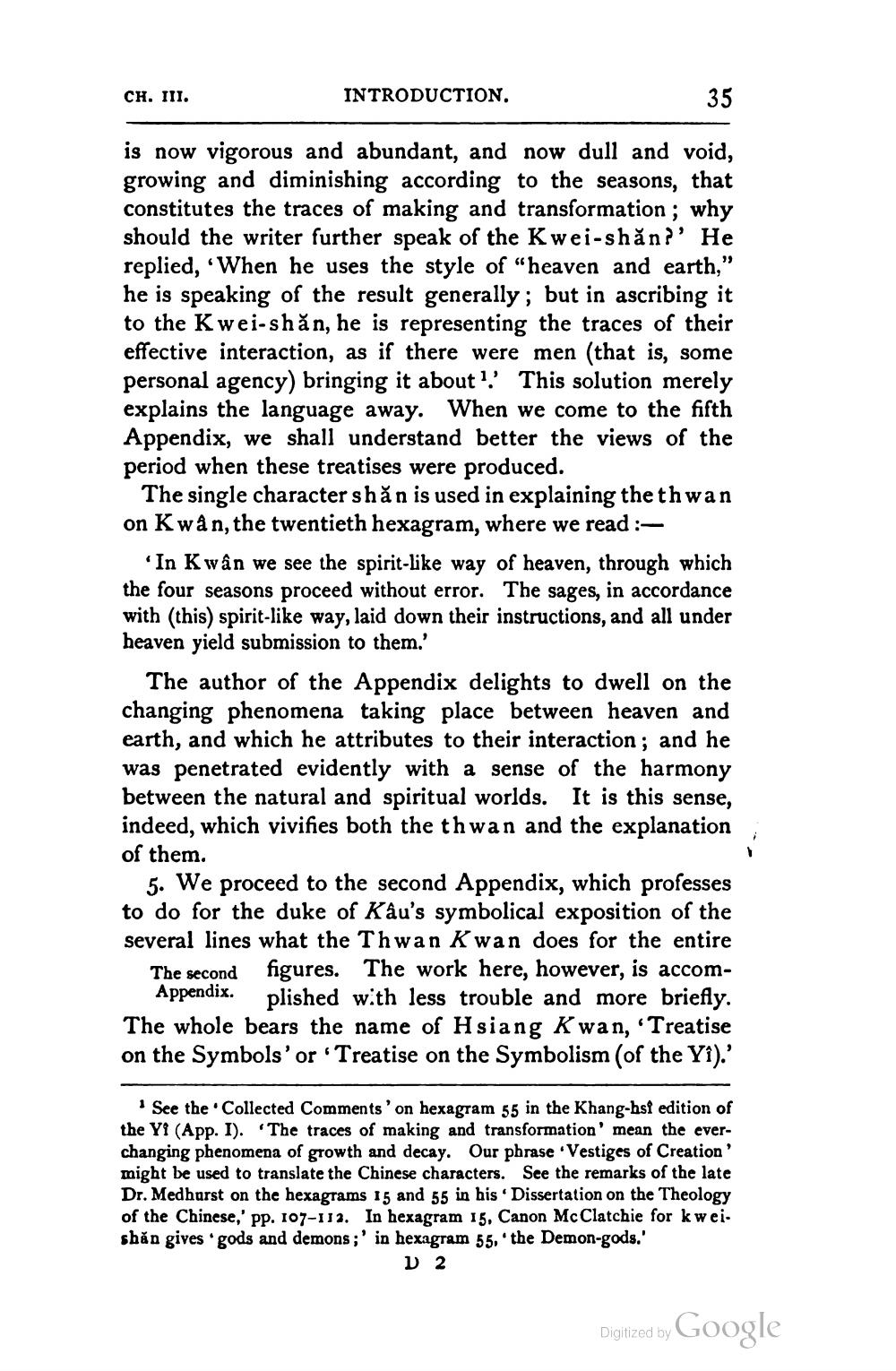________________
CH. III.
INTRODUCTION.
35
is now vigorous and abundant, and now dull and void, growing and diminishing according to the seasons, that constitutes the traces of making and transformation; why should the writer further speak of the Kwei-shăn?' He replied, 'When he uses the style of "heaven and earth," he is speaking of the result generally; but in ascribing it to the Kwei-shăn, he is representing the traces of their effective interaction, as if there were men (that is, some personal agency) bringing it about.' This solution merely explains the language away. When we come to the fifth Appendix, we shall understand better the views of the period when these treatises were produced.
The single character shăn is used in explaining the thwan on Kwàn, the twentieth hexagram, where we read :
'In Kwân we see the spirit-like way of heaven, through which the four seasons proceed without error. The sages, in accordance with (this) spirit-like way, laid down their instructions, and all under heaven yield submission to them.'
The author of the Appendix delights to dwell on the changing phenomena taking place between heaven and earth, and which he attributes to their interaction; and he was penetrated evidently with a sense of the harmony between the natural and spiritual worlds. It is this sense, indeed, which vivifies both the thwan and the explanation of them.
5. We proceed to the second Appendix, which professes to do for the duke of Kau's symbolical exposition of the several lines what the Thwan Kwan does for the entire
The second figures. The work here, however, is accom
Appendix. plished with less trouble and more briefly. The whole bears the name of Hsiang Kwan, 'Treatise on the Symbols' or 'Treatise on the Symbolism (of the Yî).'
* See the Collected Comments' on hexagram 55 in the Khang-hst edition of the Yi (App. I). The traces of making and transformation' mean the everchanging phenomena of growth and decay. Our phrase "Vestiges of Creation might be used to translate the Chinese characters. See the remarks of the late Dr. Medharst on the hexagrams 15 and 55 in his Dissertation on the Theology of the Chinese,' pp. 107-112. In hexagram 15. Canon McClatchie for kwei. shăn gives gods and demons;' in hexagram 55,' the Demon-gods.'
D2
Digitized by Google




